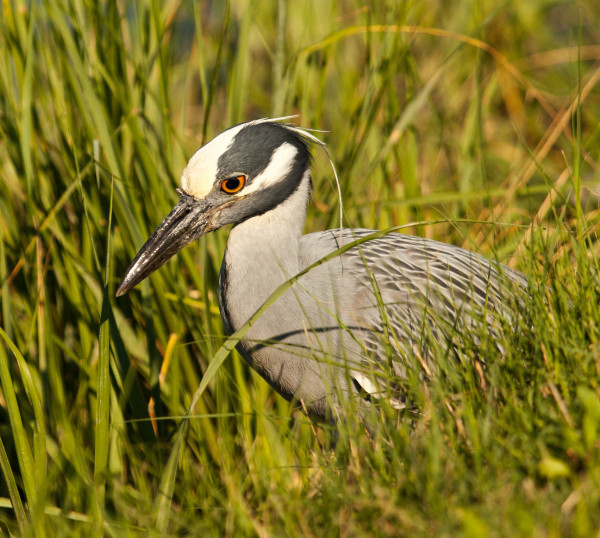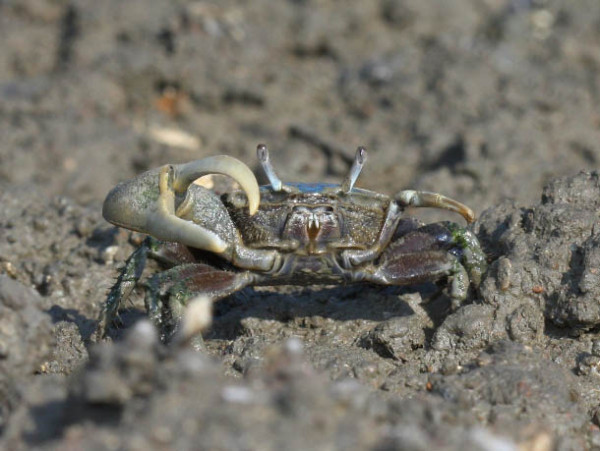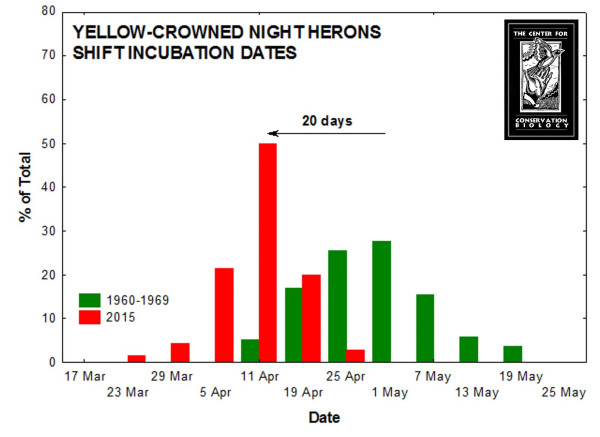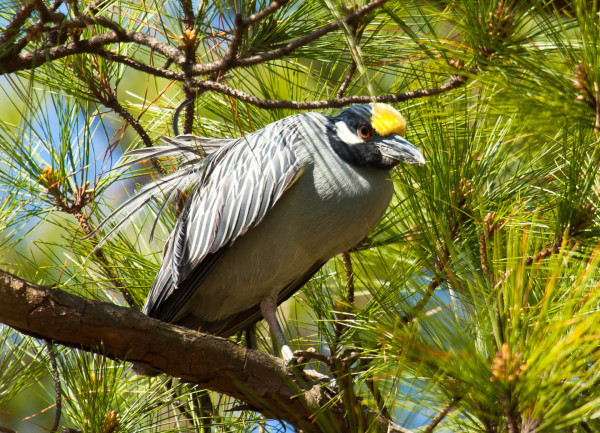Yellow-crowned Night Herons Adjust to Changing Climate

Grace – Tidewater Research Station May 12, 2015
May 14, 2015
Grace – Big Loop TRS to TRS – May 22, 2015
May 24, 2015
Over a span of only 50 years, the yellow-crowned night heron has shifted its breeding season by more than 20 days. A comparison between incubation dates collected in 2015 and dates collected decades earlier (1960-1969) reveals the shift in season. Birds are both arriving on the breeding grounds and laying their eggs earlier in the Tidewater region of Virginia.

Yellow-crowned night heron stalking through the saltmarsh in search of fiddler crabs. Exhibiting the slowest stalking technique of all North American herons, yellow-crowned foraging is specifically designed for hunting crabs. Photo by Bryan Watts.
Along the Atlantic Coast, the life of a yellow-crowned night heron is spent in pursuit of one thing: fiddler crabs. Their hunting times are scheduled around low tide when the crabs are accessible. They stalk fiddlers in the salt marsh and run them down on the mud flats. Females gorge on fiddlers to produce eggs, and breeding pairs feed the crabs to their young. Arrival of the herons on breeding grounds is timed exactly to when the crabs emerge from their burrows for the spring, and the herons’ departure in the fall is timed to when the crabs return to their burrows for the winter.

Male mud fiddler crab (Uca pugnax) in saltmarsh. Fiddler crabs are the primary prey of yellow-crowned night herons during the breeding season. Photo by Bart Paxton.
Activity in fiddler crabs is very sensitive to temperature. When the temperature rises above 15°C (59°F), they emerge from their burrows and become active. Crabs retreat to their burrows and move underground when the temperature drops below 15°C. The date in spring when temperature passes the 15°C threshold is advancing, extending the season of fiddler availability. Yellow-crowns appear to be adjusting to the shift in season.

Comparison of yellow-crowned night heron incubation dates in 2015 and the 1960s in Tidewater Virginia. Yellow-crowns are arriving earlier and laying eggs earlier compared to the 1960s. Data from CCB.
The 2015 season is the first of a multi-year study to compare the breeding ecology of the yellow-crowned night heron to a study conducted within the same colonies in the 1960s. The ten-year dataset from the 1960s was collected by Constance DuPont Darden. Mrs. Darden (former first lady of Virginia) was passionate about yellow-crowns, and her information has contributed a great deal to our understanding of the species. Her dataset is housed within The Center for Conservation Biology.

Yellow-crowned night heron just after arriving in Norfolk, Virginia, for the breeding season. Photo by Bryan Watts.
Climate change is a change in the statistical properties of the climate system over long periods of time. Regardless of the underlying causes of this change, the earth has been experiencing a documented shift in climate for decades. How wild species respond to changes in climate will determine many aspects of their ecology, including their geographic distribution, the timing of significant events in their annual cycle and for some their survival. Understanding the implications of these shifts is a growing focus of conservation biology. Because of both their migratory status and specialized diet, yellow-crowned night herons represent a model system for investigating how species respond to a changing climate.
Written by Bryan Watts | bdwatt@wm.edu | (757) 221-2247
May 18, 2015



